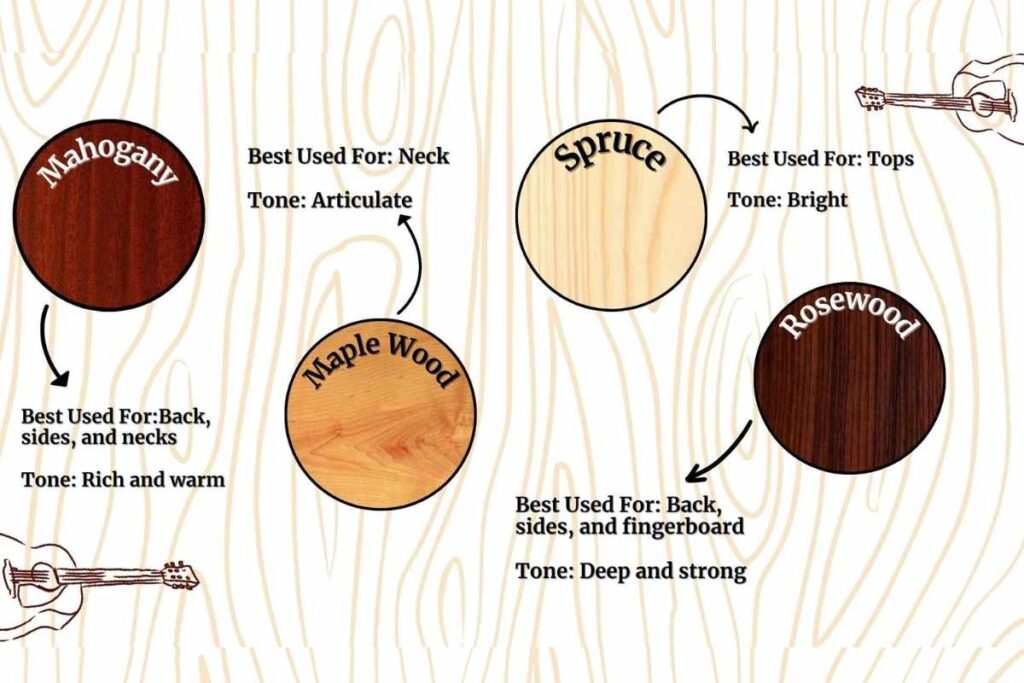Best Sounding Acoustic Guitar: Top 5 Picks for Perfect Tone | Zager Guitar
Creating a musical masterpiece with your bare hands isn’t easy. To create a symphony that grows over time requires delicate woods, strings, and the perfect guitar.
Acoustic guitars are more than just instruments; they are a ride to a melody sound. The acoustic guitar is the best in the sound category because of its tonewoods, body shapes, and string types. These elements create authentic, harmonious blends.
But what to buy and where to buy? There are hundreds of brands out there for acoustic guitars, and most importantly, how do you know they sound the best? That’s what we will explore today.
Key Highlights: Best Sounding Acoustic Guitar
- Zager ZAD80 has an all-in-one rosewood back and sides, dreadnought body, and bracing system string for no finger bites. And everything aligns to give the perfect sound.
- Martin D-28 is a popular guitar with a rich, balanced sound made from spruce.
- Taylor 814ce is known for its clear, bright tone for versatile use.
- The Gibson J-4 has the perfect mellow sound for your favorite folk or country genre.
- Yamaha LL16 is affordable and has the ideal balanced tone for fingerpicking.
Factors that Determine the Best Sounding Acoustic Guitar
When searching for a sounding guitar, brands shouldn’t be your first concern. You should look for what the guitar is made of. The true foundation lies within the tonewoods, body shapes, and string types. Let’s dissect how they are the foundation of the acoustic guitar.
Tonewoods: The Foundation of Acoustic Guitar Sound
Tonewoods give the overall shape to the guitar sound. At first, it might seem that they are just the outer skeleton of the guitar, but they aren’t. With every different wood, you will have unique tonal characteristics.

| Woods | Description | Sound |
| Mahogany | This one goes on the back, sides, and necks of the guitar. It is more reddish-brown and has a straight-grain pattern. | It gives a warm, rich timbre focusing on pronounced midrange frequency. |
| Rosewood | Another popular choice for the back, sides, and fingerboard of the guitar. It has a dark brown shade with a distinctive grain pattern. | Rosewood is the home name for its complex tonal characteristics. It gives you a deep, strong, and resonant bass sound. |
| Spruce | The top of the guitar is mainly made of spruce wood. You can identify them with their light-colored, visible grain pattern. | The sound of the spruce is very articulate and clear. It has a bright sound projection. |
| Maple | You will mostly see maple on the necks of acoustic guitars. It is made out of single wood that comes under the solid wood. | This tonewood also participates in the bright, articulate tone. |
Body Shape and Size: How It Influences Sound
The body shape and size also play a part in the sound. The guitar shapes and sizes determine the levels of volume, projection, and tonal characteristics.
| Guitar shape and size | Affects on sound |
| Dreadnought | The most common body shape in the guitar industry. It is bigger and heavier than any other guitar. The sound from it comes out full, balanced with a deep bass response. |
| Concert and Grand Concert | Smaller than Dreadnought and other standard guitar sizes. It offers a more focused and intimate tone for the closed events. |
| Jumbo | With a large, rounded body, jumbo guitars present a loud, growling sound with plenty of projection. |
| Auditorium | Hitting a balance between volume and tonal intricacy, auditorium guitars deliver an adaptable sound suitable for various musical styles. |
String Type and Gauge: Key Contributors to Sound Quality
The type of strings and gauges in the acoustic guitar can specify the kind of sound you will get. What strings offer is the brightness, warmth, and playability.
| Strings | Impact on the sounds |
| Light Gauge | Light gauges are the beginner-friendly string. It is easier to play and has the softest and delicate sound. |
| Medium and Heavy Gauge | These strings require more finger strength and are perfect for powerful strumming patterns. Its sound is louder and fuller. |
| Phosphor Bronze and 80/20 Bronze | Phosphor bronze strings will give you a balanced tone, while 80/20 bronze strings will satisfy your liking for a brighter and more metallic sound. |

Comments
Post a Comment